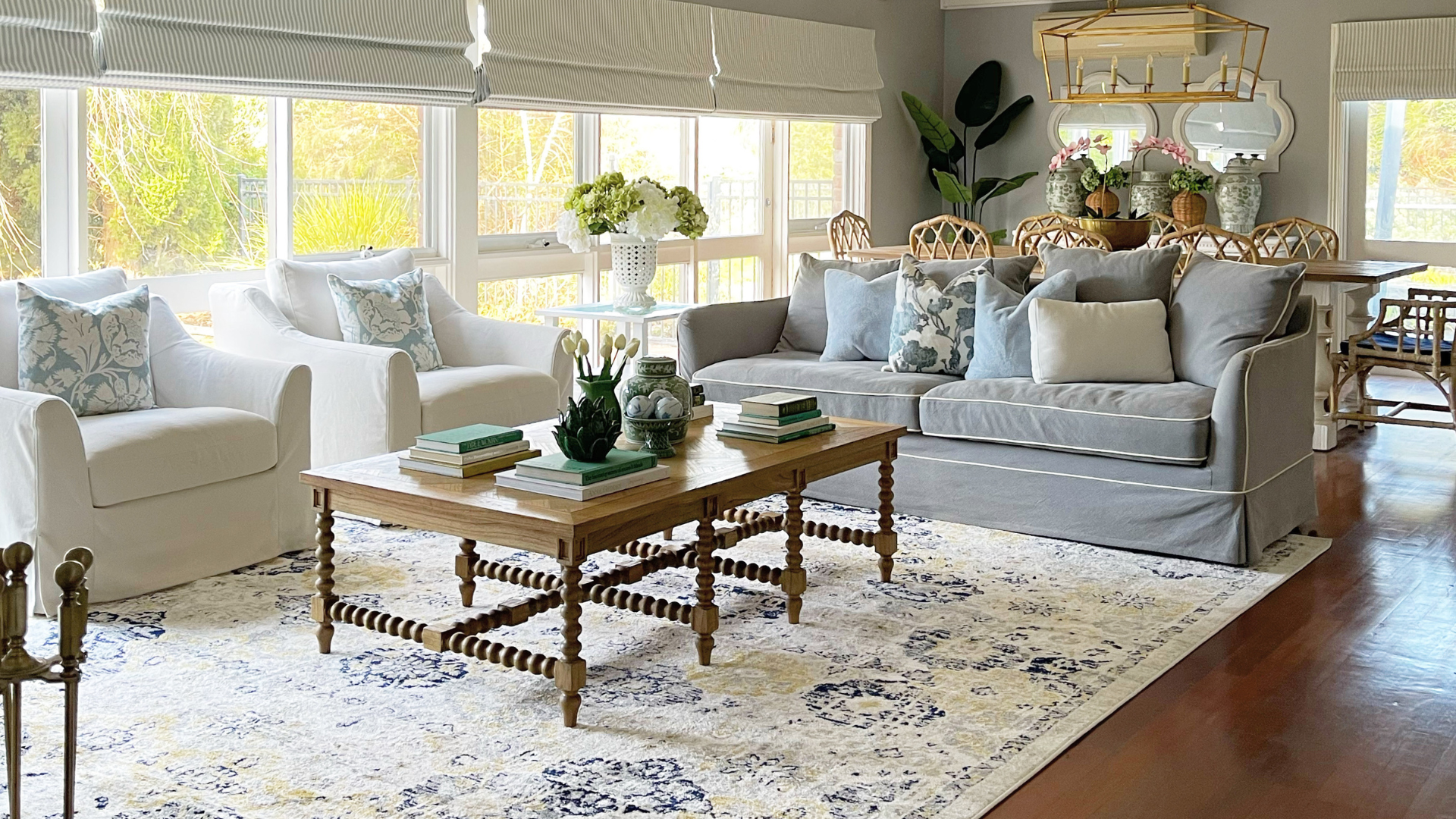
Unravelling The Charm Of Most Popular Home Styles US Rugs
Home rugs are an easy and cost-effective solution that transforms rooms, adding style, comfort, and functionality. However, with heaps and heaps of materials, dimensions, shapes, patterns, and designs out there, selecting your top rug picks can be a challenge.
This article serves as a comprehensive guide to understanding popular rug types and rug materials. It’ll also teach you all about the right size and shape, design and colour considerations, and care and maintenance. This way, you can inject even more life into your living space and have confidence knowing that your rugs can be lifelong companions to your home’s floors.
Introduction to popular home rugs
Explanation of what home rugs are
Home rugs are among the easiest and most uncomplicated methods of instilling vitality and vibrancy into any living area. These functional and stylish pieces can completely transform the look of a room, adding texture, warmth, and colour.
Home rugs are textiles that are placed on the floor. They’re an incredibly versatile addition to your interior design arsenal since they have different dimensions, shapes, textures, and materials. They can even be used in practically every room – yes, even your dull storage area!
Ultimately, a rug can be used to define a space, make it feel cosier, or add a pop of colour to a more neutral room.
Discussion of the importance of home rugs in interior design
Rugs are an essential component of interior design. They provide a focal point for a room and can tie together elements of decor, such as colours, patterns, and textures. A well-placed rug can make a space feel more polished and inviting and can even help with acoustics by absorbing sound.
Overview of the most popular types of home rugs
The diversity of rug styles is as expansive as the countless grains of sand that cover the beach, featuring an array of popular options such as Persian, Moroccan, shag, and flat-weave rugs.
Persian rugs, characterised by their intricate designs and rich colours, are a timeless classic. Similar to this, Moroccan rugs often imbue a bohemian vibe through the use of complex yet aesthetic geometric patterns.
In contrast, shag rugs are exceedingly plush and snug, imparting a hint of opulence to any room. Finally, flat-weave rugs showcase flexibility and resilience, rendering them an exceptional option for zones that receive heavy foot traffic.
💡KEY TAKEAWAY: Home rugs are an easy and effective way to add style, warmth, and texture to a room while also serving an important functional purpose. There are many rug types to choose from, each with its own unique characteristics and advantages.
Understanding rug materials
Explanation of the most common materials used in home rugs
Rugs can be made from a variety of materials, each possessing unique characteristics that affect their look, feel, and durability.
The most common materials used in rugs are wool, cotton, silk, and synthetic fibres such as nylon or polyester.
Wool is a popular choice because of its natural softness and durability. Cotton is often used as a backing material, but it can also be used as a primary material for flat-weave rugs. Silk has a luxurious and delicate texture, making it a premium material often used in high-end rugs. Synthetic fibres are manufactured materials often used to imitate more natural materials such as wool or silk.
Pros and cons of each rug material
Wool has natural stain-resistant properties and does not hold on to dirt and debris. It is also relatively easy to clean and quite durable. However, wool can be expensive, and it may have an unpleasant odour when wet.
Cotton is durable, affordable, and easy to clean, but it may wear out quickly and hold onto stains more than other materials. Silk is soft and luxurious, but it will damage easily and is not as durable as other materials. Synthetic fibres are usually affordable and easy to clean, but they will not last as long as more natural materials.
Factors to consider when choosing a rug material
Factors to consider when selecting which rug material include your budget, the amount of foot traffic the rug will receive, and the level of maintenance and care required. In high-traffic areas, wool or synthetic fibres are the most recommended materials due to their durability. Natural fibres such as cotton or silk should be used in low-traffic areas.
The cost of the rug is also a factor, with more natural fibres generally being more expensive. Lastly, consider the amount of maintenance the rug requires since natural fibres may require more specialised cleaning methods than synthetic fibres.
💡KEY TAKEAWAY: The choice of rug material should depend on factors such as intended use, level of maintenance, and budget. The most common rug materials are wool, cotton, silk, and synthetic fibres – each with its advantages and disadvantages.
How to choose the right size and shape
Explanation of the factors that determine rug size and shape
Rugs are an essential element of any room, and selecting the right size and shape is crucial to creating a harmonious space. When choosing a rug, several factors come into play, including the size of your room, furniture placement, and rug orientation.
The size of the rug is determined by the dimensions of the room and the furniture arrangement. A rug should be large enough to cover the main seating area and create a defined space. The shape of the rug should complement the shape of the room and the furniture arrangement.
How room size, furniture placement, and rug orientation impact rug size
In larger rooms, a larger rug is required to fill the space and create a cohesive look. In smaller rooms, a smaller rug can make the space feel more expansive. The dimensions and orientation of the rug are contingent upon the arrangement of furniture within the space. A rug should fit comfortably underneath the front legs of the furniture, creating a defined seating area.
Tips for choosing the right rug size and shape for your space
When choosing a rug, consider the style of the room, the size of the furniture, and traffic flow. A rug should complement the style of the room and add texture and colour to the space. When arranging furniture, make sure that the rug is large enough to accommodate all of the pieces comfortably. A rug should also allow for easy movement around the space.
In conclusion, choosing the right rug size and shape is essential to creating a welcoming and harmonious space.
💡KEY TAKEAWAY: When selecting a rug, keep in mind the dimensions of the space and the furniture arrangement, as well as the orientation and shape of the rug. A perfectly chosen rug can complete the aesthetic of any room.
Design and colour considerations
Overview of popular rug designs and patterns
When it comes to rugs, design and colour are two essential aspects that impact the overall aesthetics of a room. From traditional to modern designs and bold to neutral colour palettes, there are countless options to choose from.
Rug designs and patterns play a crucial role in highlighting the overall theme of the room. Traditional Persian and Turkish rugs feature beautiful floral and geometric patterns that add a timeless charm to any space.
Contemporary rugs, on the other hand, feature abstract designs and bold colour schemes that are perfect for modern interiors. Kilim rugs, Moroccan rugs, and Oriental rugs are also popular choices with unique patterns and designs that can add character and warmth to your room.
Explanation of how rug design and colour impact room aesthetics
The right rug design and colour can completely transform the look and feel of your room. For instance, a Persian rug can add a touch of elegance to a formal living room, while a shag rug may be more appropriate for a cosy den or bedroom.
Just as important, the colour tones and overall palette used can make or break the mood of a room. To give some examples, plain colours like ivory, beige, and grey are often calming when they cover the room, while bright and punchy colours such as blue, red, and orange can make a spicy statement.
Tips for choosing a rug design and colour that matches your interior decor
When choosing a rug, it is essential to consider your existing furniture and decor. Look for a rug design and colour that complement the overall style of your room. If your furniture is neutral, you may want to choose a bold rug to add some interest to the room.
Conversely, if you have a lot of statement pieces in your space, a neutral rug may help balance the overall look. Don’t be afraid to mix and match patterns as long as they complement each other.
💡KEY TAKEAWAY: A rug’s design and colour are two integral aspects that can impact the look and feel of your room. Understanding the different designs and patterns available can help you choose a rug that complements the overall style of your space.
Care and maintenance of home rugs
Explanation of how to care for and maintain different rug materials
As someone who’s keen on getting a rug, you should know that care and maintenance are crucial to keeping beauty and longevity. Different rug materials require specific care, so it’s essential to understand the right methods for cleaning and preserving each one to avoid damaging them.
There are different rug materials available, such as wool, silk, cotton, and synthetic fibres, each with varying care requirements.
Wool rugs are durable and easy to clean, but they require gentle handling to avoid shrinking or damaging the wool fibres. Silk rugs, on the other hand, are more fragile and require special care, like vacuuming frequently and avoiding exposure to direct sunlight, to prevent colour fading and fibre damage.
For cotton and synthetic fibres, it’s best to avoid wet cleaning methods and to clean them thoroughly with a vacuum cleaner.
Tips for cleaning and preserving rug fibres and colours
One crucial tip for preserving the colours of your rug is to avoid exposure to direct sunlight, which can cause fading. It’s also best to use a rug pad to prevent wear and tear caused by foot traffic. Regular vacuuming and spot cleaning can prevent dirt and stains from settling in and prolong the rug’s life. Be sure to use a mild cleaning solution and test it on a small patch first before applying it to the entire rug.
Overview of professional rug cleaning methods and services
Professional rug cleaning is recommended every few years to remove deep-seated dirt and stains. It can also help preserve the rug’s colours and fibres. The professionals use specialised cleaning methods, such as dry cleaning, shampooing, and steam cleaning, depending on the rug’s material and condition.
It’s best to choose a reliable professional cleaner who specialises in rug cleaning to ensure the proper care of your precious rug.
💡KEY TAKEAWAY: Different rug materials require different care methods, and it is crucial to know how to clean and preserve them to avoid damaging the rug’s fibres and colours. Professional cleaning services are also recommended every few years to keep your rugs looking their best.
Our team of experts at Miss Amara is committed to providing a seamless rug shopping experience and exceptional customer service. Aside from our stylish, high-quality rugs that’ll last a lifetime, we also have free design consultations for easy decision-making.
















